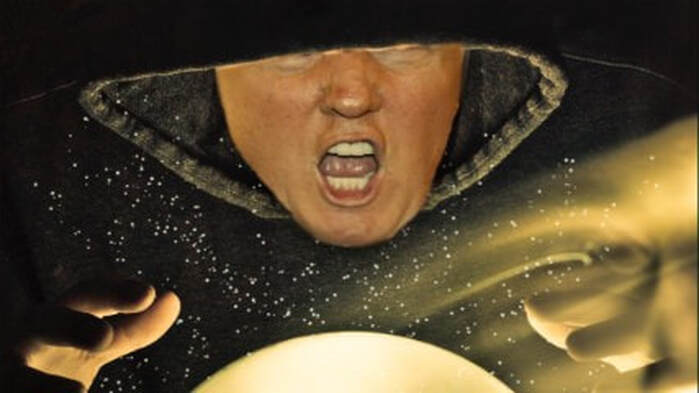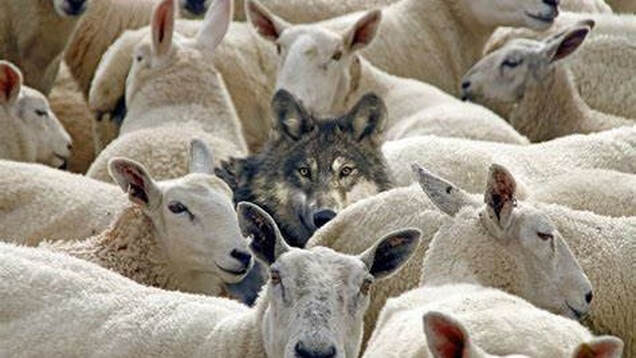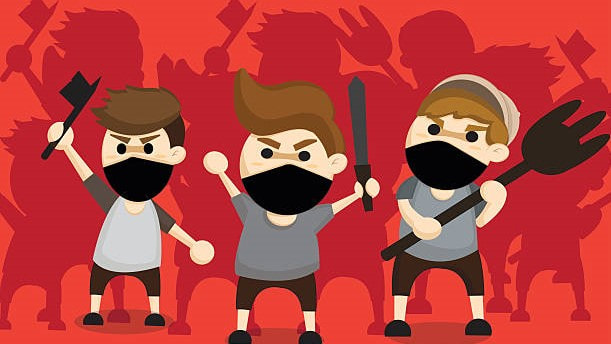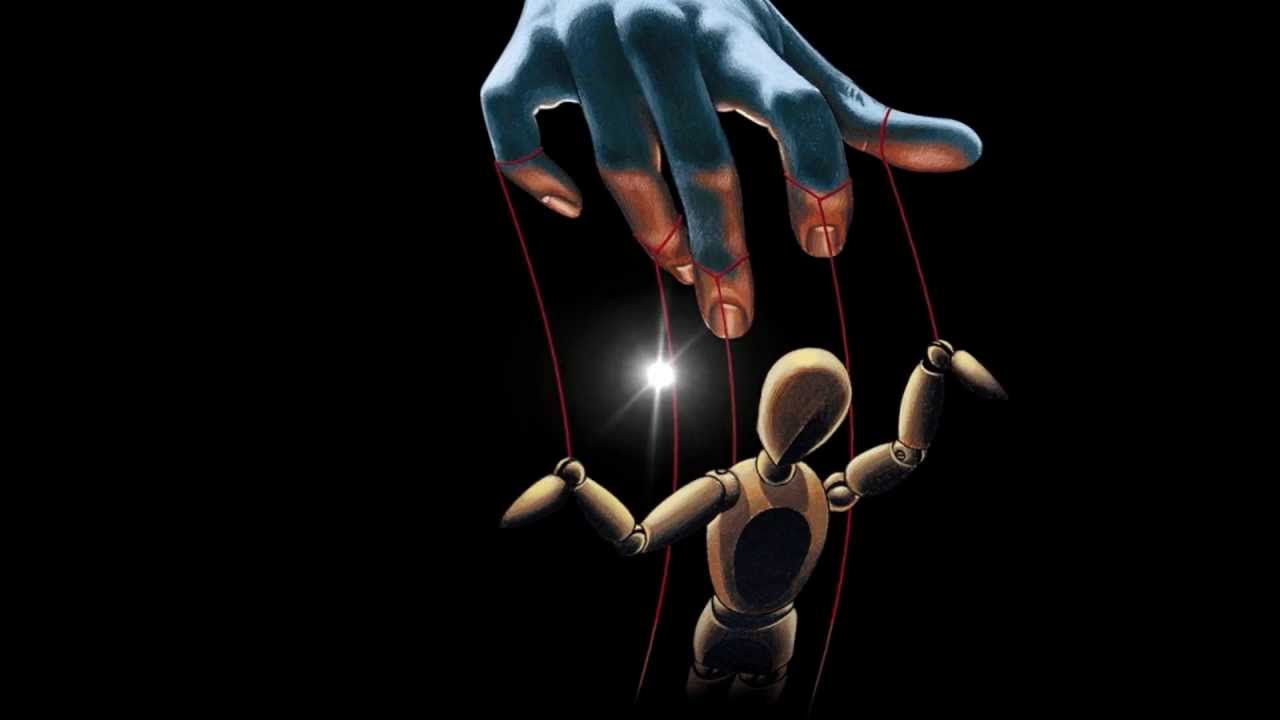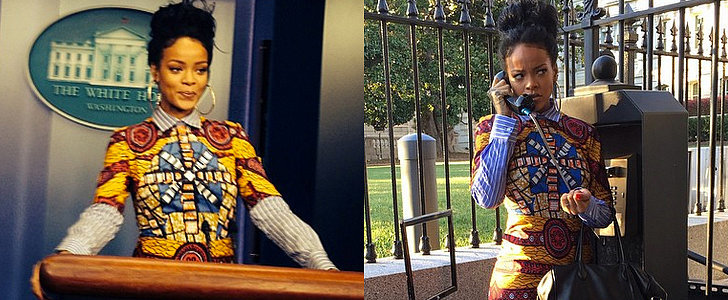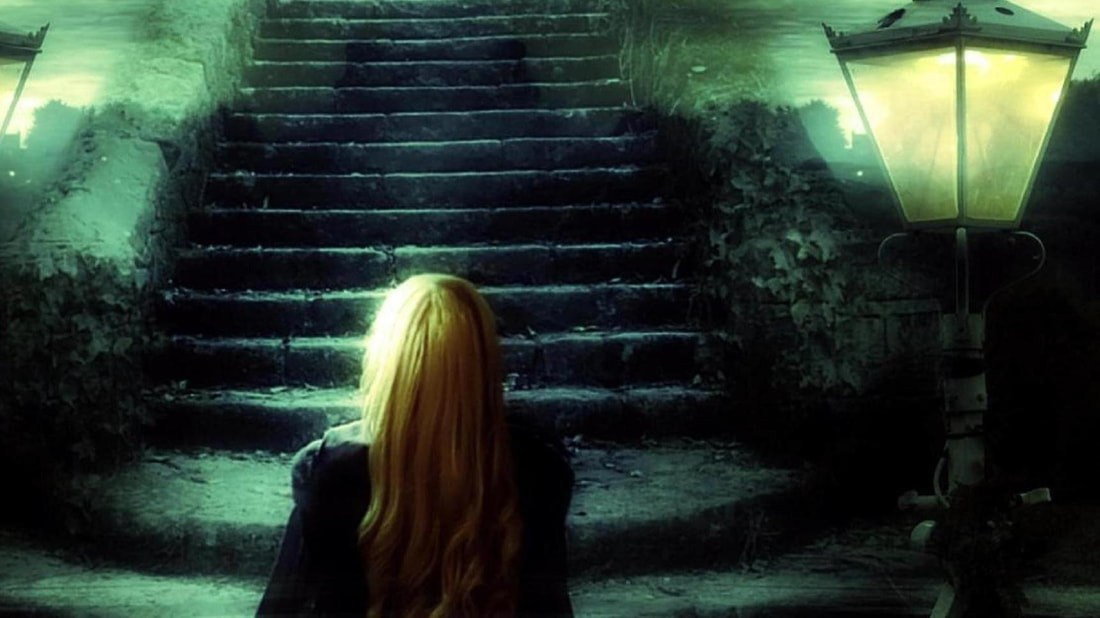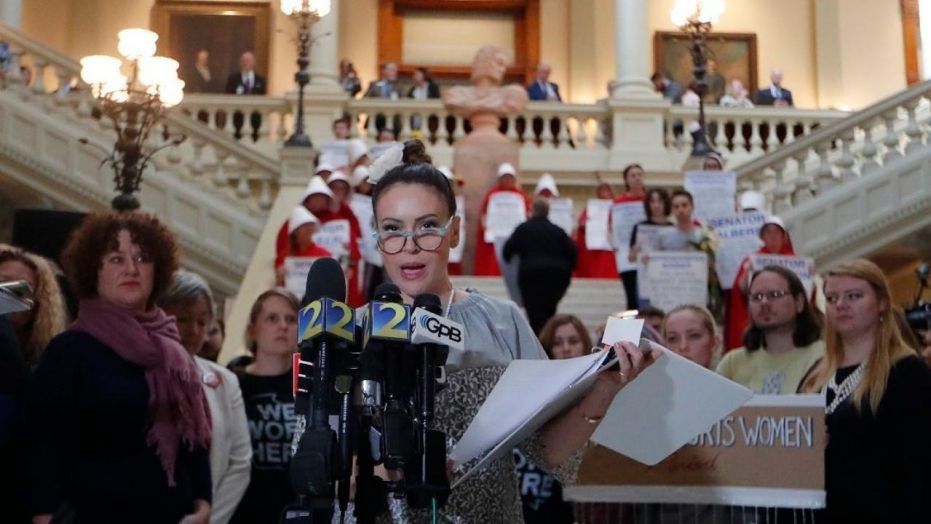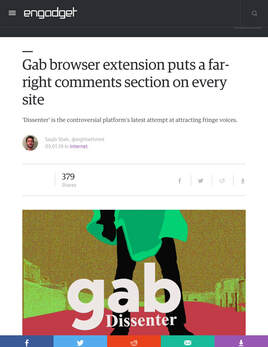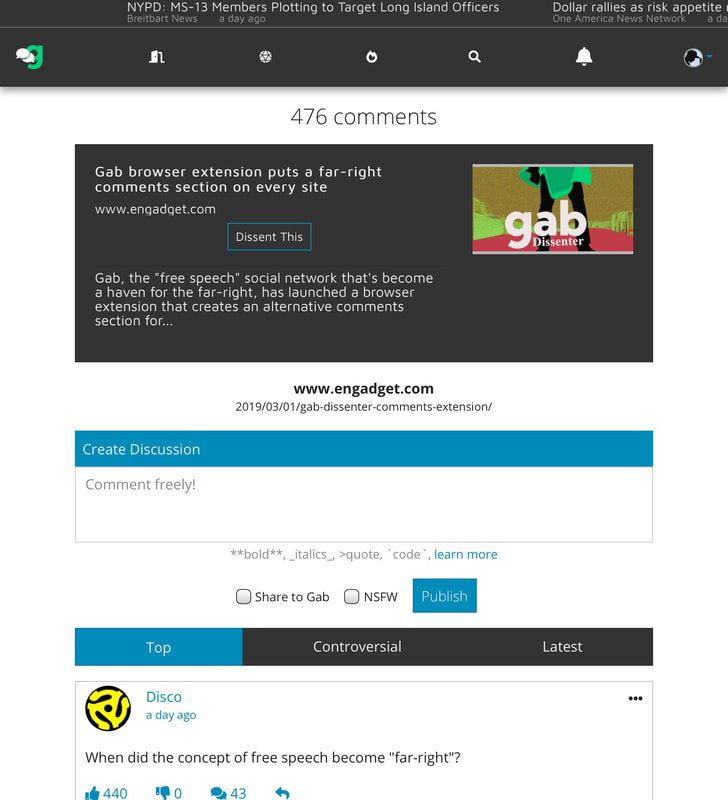|
Missed by many amidst the news of civil unrest in the nation was the discovery of an old interview which may shed light on the reason for our current national condition. I have written in the past about the practice of occultism among our national elites in politics and entertainment. I began a journey of discovery about the topic when, during the 2016 election season, Wikileaks released the personal emails of Clinton insider John Podesta. The disturbing revelations included his communications with one Marina Abromovic, a supposed performance artist, inviting her to his home to perform the sickening "spirit cooking" ritual. The unearthed clip was from an old interview with Abromovic in which she explained that Donald Trump was going to rise to power, and that he was a "magician" who would "wake up the world." I am unwilling to assume that a devotee of occultism is using the term "magician" as a figure of speech. What does this highly-placed practicioner of the dark arts know about Donald Trump? You may recall Trump enthusiasts excitedly reporting the 2007 "prophecy" of the late televangelist Kim Clement that Donald Trump would become President, and that he would face impeachment threats but emerge unscathed. Amazingly, Clement also "prophesied" at the same time that Bill Gates would bring a new financial system to the world. In the wake of the COVID-19 lockdown, Gates has emerged on the global stage to promote his "quantum dot tattoo" identification system, which allows for cashless, touchless financial interactions. (Unbelievably, the quantum dot tattoo uses a patented substance called "Luciferase," and the patent number is 060606 - "666." If the symbolism of this is not intentional, it is an incredible coincidence.) He has touted the benefits of his injectable identification system which also removes the need for carrying personal ID cards, and tweeted that because of COVID-19 there is no alternative to the implementation a global vaccination program. End-times prophecy watchers have been sounding the alarm that the Mark of the Beast is being prepared for the public. Clement was incredibly accurate in his predictions, but was that because he was sharing prophecies from the Lord, or channelling the plans of the enemy? There are additional reasons for concern about the motivations of Bill Gates. A few months ago, Microsoft made the startling choice to use the above-mentioned spirit cooker Mabrina Abromovic in a promotional video for the new Microsoft virtual reality system. (The promotions were removed from the internet rather quickly after severe backlash from the public.) In his pre-Presidential days, Trump expressed concerns about possible risks of vaccinations, which caused many critics of Big Pharma and the liberty-minded who object to mandatory vaccinations to view him as a kindred soul. It is odd that a man who was once viewed as a vaccination skeptic pledged, in the wake of the COVID-19 crisis, to fast-track a vaccination for the illness and make it available to all Americans. It is even more odd that a few weeks ago, Trump filmed an ad in support of the Bill and Melinda Gates foundation GAVI, the Global Vaccine Alliance, which works to increase access to vaccinations in poor countries. To honest observers, it is clear that there is a canyon between Donald Trump's rhetoric and his actions. Yet, enthusiasm for him remains for a large number of people. For millions of people, the "Q-Anon" phenomenon plays a role in their unwavering faith. "Q-Anon" is a mysterious entity who supposedly channels insider information to Trump's faithful followers about his 4D-chess plans to drain the swamp. Every action taken by Trump which seems to betray his promises is explained as a brilliant part of a long-term, complex scheme to bring down the bad actors in government. Millions of people still tenaciously hold to the Q-Anon advice to "trust the plan," because, despite copious evidence to the contrary, "patriots are in control." Recently, Donald Trump Jr. and General Flynn have retweeted social media posts made by "Q-Anon" supporters, indirectly signalling support for the theory. Nobody knows who Q-Anon is. Some believe the phenomenon is run by patriotic insiders in the intelligence community. Theories include Q-Anon being run by General Flynn, Barron Trump, John F. Kennedy, Jr. (who supposedly faked his death years ago and is now helping Trump behind the scenes), or some kind of artificial intelligence program. To reiterate, millions of people have faith in a secret plan based solely upon on a series of anonymous internet posts. How can otherwise sensible people be convinced to believe Q-Anon rather than plain evidence? It's almost as if they are under the spell of a magician.
3 Comments
Indisputably, the current state of American pop culture and entertainment is abysmal both morally and artistically. Most people with good character and taste have disengaged from it completely, or limit themselves to a few carefully selected shows or performers. While I do not blame anyone for choosing not to wallow in the toxic sewage pumped out by the so-called entertainment industry, the sad fact is that we share a world with millions of people who are enthralled by it, so I believe we should keep up some degree of awareness. In a recent piece I detailed how many A-list celebrities are pushing an unmistakably satanic agenda on the now spiritually empty, morally rootless American population. The train continues to careen full speed towards the lake of fire. While satanic expression used to be a fringe activity practiced by a few heavy metal performers and shock artists, today it is standard fare offered by the most celebrated pop stars. There is no more pure embodiment of this sick trend than relative newcomer Billie Eilish, a teen from Los Angeles, who could have been Ozzy Ozborne's hip zoomer granddaughter. Songs like "All Good Girls Go To Hell" and "Bury a Friend" are accompanied by blood-chilling, waking-nightmare style music videos. The current "it" girl of American music, she has been plastered on countless magazine covers as of late, and she even broke records at the most recent Grammy awards for being the youngest artist in history to sweep multiple categories. While the normalization of satanic imagery and ideas is horrifying, I don't believe this trend is the most dangerous thing being pushed by the American entertainment industry. Christ warned of wolves that would appear in sheep's clothing. I fear more real harm can be done by deceivers, such as the "Hollywood Christians" who wander among the credulous sheep. It is my strong opinion that there are NO real Christian Hollywood stars. You can no more be a Christian Hollywood star than you can be a Christian drug lord or a Christian mafia boss. You do not become a household-name star, with all the accompanying wealth and societal influence, by being an enemy of the system that sustains you. This seems to be a hard point for many people to accept. Many American Christians swoon when a star thanks God for their Oscar, or tweets a prayer request for a sick child. They excitedly share stories on Facebook whenever a celebrity gives a boilerplate interview about the importance of faith. Recently there has been an undue amount of fanfare about the supposed Christian conversion of rap artist Kanye West. Last year he released an album called "Jesus is King," and hit the talk show circuit to talk about his faith. He has been offering a series of concerts called "Sunday Services" that are attended by selected fans and fellow celebrities. Christians all over the country have been gleefully celebrating Kanye's supposed salvation, and are hopeful that Kanye will bring many souls to Christ. Where, oh where, do I begin debunking this nonsense? First, there is no evidence of spiritual fruits. In the past, Kanye declared himself to be a god, dubbed himself "Yeezus," and often mimicked Christ, portraying himself in a crucifixion pose or with a thorny crown. He even taunted an actor dressed as Christ on stage during a live performance. A true convert would unequivocally, forcefully denounce his prior behavior, begging forgiveness from God and grieving for any fans he had led astray. Nothing like this has happened. There is not only an appalling lack of repentance, but also of humility. When appearing with megachurch "prosperity preacher" Joel Osteen last fall, Kanye was pleased to inform the crowd that he, "the most talented man in the world" was now serving God. On another occasion, he claimed God was using him "to show off." He continues to keep company with the worst kind of blasphemers. Just a few days before the Osteen appearance, Kanye appeared at the Astroworld festival where he shared a stage with a number of sickening performers, including openly satanic shock artist Marilyn Manson, who burned a Bible on stage as part of his act. The above-mentioned Billie Eilish even attended one of his "Sunday Services." Unbelievably, there are still plenty of Christians excusing his behaviour as the missteps of a "baby Christian." The lack of discernment among American Christians is mind-boggling. Osteen is but one favorite "preacher" of the glitterati. Other "Hollywood Christians," such as Justin Beiber, Selena Gomez, Nick Jonas, Chris Pratt, Bono, and various members of the Kardashian/Jenner clan, have been spotted at megachurch Hillsong. Hillsong's stadium-filling worship services feature heavily tattooed, skinny-jeans wearing pastors and concert-style musical shows with performers who are staples of Christian contemporary music stations. Calling Hillsong a modern-style church does not fully convey the lack of sanctity their "worship" services display. For example, one Hillsong rendition of Silent Night - I am not making this up - opened with a lengthy drum solo and featured a burlesque-style dance troupe. The problem isn't simply that Hillsong is too worldly. The problem is that it is not even a church. Instead of a cross, the center stage is often lit with a pyramid-shaped "hill" overwhelming the stage, and other non-christian symbols are frequently used. The Christmas pageant featured a soloist who looked more like Ishtar than the Virgin Mary, and dancers under a bright moon carrying glowing orbs. One popular Hillsong tune, Oceans, begins with the lyrics "You call me out upon the waters/The great unknown where feet may fail/And there I find You in the mystery...Spirit lead me where my trust is without borders." Not only is Christ not mentioned, the lyrics make more sense as a promotion of new age spiritualism or ancient mystery religions. Similarly, video of Kanye's Sunday Services show attendees wearing pastel robes, swaying in circles while singing hypnotic, rhythmic chants. The costumes, music and symbolism bear little if any relation to traditional Christianity. (Attendees are required to sign non-disclosure agreements, so there is no telling what goes on behind the scenes at these events). If these "churches" were merely watering down Christianity to neutralize it, that would be bad enough. But it is worse than that. In my opinion, these churches are part of a calculated plan to herd nominal, lukewarm Christians towards the coming One World Religion. While the Pope welcomes Muslims and Pagans to his fold with talk of tolerance and inclusiveness, Hollywood Christians are slowly, insidiously, helping to transform American Christianity into a hybrid of all faiths. American church-goers, who have been convinced that there is no such thing as wolves, only different kinds of sheep, have no idea.
The Unite the Right event in Charlottesville made its mark on the psyche of the nation in August 2017. For most, it is cemented in their minds as part of national history, the nature of which has already been decisively settled. Those who depended on the MSM narrative have heard the event frequently mischaracterized as a "white nationalist rally," and often used to condemn Trump for supposedly calling Nazis "very fine people." (For a more accurate assessment of Unite the Right, please see our series of articles about the event). Having satisfactorily convinced most Americans of the elite-approved narrative, the Fake News peddlers have moved on to other subjects. Consequently, most people don't know about the Charlottesville saga that continues to play out in the courts. That is unfortunate, because the case not only challenges the official narrative of the contentious event, but also raises important First Amendment issues. On February 21, a decision was issued by the Fourth Circuit in the Kessler vs Charlottesville lawsuit, which event organizer Jason Kessler filed against the city for violating his First Amendment rights by orchestrating conflict in order to justify shutting down Constitutionally protected speech. The "heckler's veto" issue that is central to the case has rarely been raised in U.S. courts. There is a precedent set in the Sixth Circuit from a 2015 case in which a group called the Bible Believers, a group of anti-Islam Evangelicals left unprotected by police, were removed from a Muslim festival in Dearborn when the crowd became violent towards them. In this case, the court decided in favor of the Bible Believers, reasoning that the police could have taken other action that would have allowed the Bible Believers to exercise their rights to free speech. Unfortunately, with regards to Kessler vs Charlottesville, the judge granted the city's motion to dismiss the case. The ruling, which focused heavily on the obligations of police to protect, stated that "plaintiffs did not suffer any violation of an existing constitutional right." Really? As Kessler remarked after the ruling was issued, the rally speakers "never got to say one word in support of the [Robert E. Lee] statue." They will appeal the ruling. It is entirely possible this case could be argued before the Supreme Court. As tensions in this country increase, the right to free speech in potentially volatile situations will become an even more a critical issue. Kessler's persistence in this David-and-Goliath case is laudable. He and his legal team have faced delay tactics, stonewalling of FOIA requests, and adversarial press. They have been harassed with excessive discovery request by some of the Usual Suspects who have also been a thorn in the side of the Trump administration. (He is also a defendant in a civil case stemming from Unite the Right which is expected to begin in the fall of this year.) Despite the disappointing ruling, Kessler remains determined and optimistic. Noting that free speech is the most important issue in dissident politics, he declares that he intends to fight until all legal options are exhausted. Either we will win, or we will learn for certain that the courts will no longer uphold the right to free speech. If so, we must be prepared to make a populist appeal based on the facts of the case - that, he believes, we can win. I'm not a scientist. In fact, I struggled with the basic requirements of science needed for high school and college graduation. It's not my "thing." Even if you did better than me in your science classes, you are probably not a "climate scientist." Still, I think there are plenty of common-sense reasons to disbelieve the doomsday cult of environmentalism. Erased HistorySome of us are old enough to recall when "global cooling" was a concern. Then the fear was "global warming." You don't have to reach too far back to remember when Al Gore received worldwide praise for announcing the Inconvenient Truth that the polar ice caps would all be melted by the year 2013. (In case you haven't noticed, they're not all melted). The list of failed predictions goes back decades. Mistakes and re-calibrations do not disprove the notion of global climate change. The issue isn't that mistakes are made - it's that when the predictions don't come true, there is never an explanation given for the errors, or even an acknowledgement. There is no explanation why we should believe in the greater reliability of the new assertions. Given the laughably bad track record of past predictions, it's reasonable for us to be highly skeptical of new predictions. Still, full faith in the doomsday proclamations is expected - no, demanded - by people who are completely unaccountable for their own previously stated beliefs. Hypocrisy - oh, the hypocrisy!Global elites flock to Davos annually in private jets to discuss reducing carbon emissions. Al Gore lives in an expansive estate. Alexandria Ocasio-Cortez rides in an SUV from her apartment to her office at the nation's capital. The Obamas just bought beachfront property which we are to believe will be underwater in a few short years. Celebrity environmentalism advocate Leonardo DiCaprio has used private movie studio jets to squire models from coast to coast and vacationed on one of the largest yachts in the world. Rather than being scorned by environmentalists as a hypocrite and a poser, he is showered with awards, which he happily jets all over the world to collect. He is not adored because of his conscientious stewardship of resources, but because, like Tom Cruise with Scientology, he is a celebrity member of a cult. Why don't the Davos attendees set a good example for the rubes by foregoing their luxury travels and accommodations in favor of a video conference? Why doesn't political "it" girl AOC make going car-less cool by lacing up a pair of designer sneakers and hoofing it to the capital every day? When is Al Gore going to downsize and embrace a minimalist lifestyle? People who were sincerely concerned about the effects their actions have on the environment would not shamelessly flout their own advice, yet the loudest advocates almost invariably do. Convenient RemediesInvariably, solutions to man-made "climate change" are beneficial, or at least not disruptive, to those who propose them. Vegetarians want you to give up meat. City dwellers want you to give up your car. Web designers want coal miners to find a new line of work. "The future of humanity is at stake - people I don't like must sacrifice things I don't care about!" I have recently heard celebrities encourage fans to eat less meat and dairy and use less plastic. Aluminum drinking straws and reusable shopping bags are popular. But consider the many things which impact the environment that are NOT being discussed. To prevent the end of all human life, shouldn't people be willing to give up hormonal birth control and quality-of-life drugs which are flushed into the water supply? How about imported foods like bananas, avocados and coffee? Eating only locally-grown, in-season produce would cut down pollution from fuel and refrigeration. How much energy would be saved if everyone in the USA completely gave up recreational travel, or if non-essential businesses all closed after sundown? And we don't really NEED to upgrade our electronics, use climate control, or buy new clothing regularly. Making such drastic lifestyle changes would be a sacrifice, but it's better than facing certain doom in *checks watch* 11 and a half years. And - this is almost too horrible to contemplate, but the future of humanity is at stake - we could urge our fellow Americans to STOP BUYING CRAP THEY DON'T NEED. We are called to sacrifice for the future generations who cry out, "For the love of all that is holy, please don't buy another throw pillow!" Think of all the fuel and plastic waste that would be saved if every soccer mom in America stopped binge-shopping at Target! It would be a big sacrifice, but worth considering before we resort to CANNIBALISM as one Swedish professor recently suggested. Now that I think of it, I have also never heard a politician or celebrity mention the waste of resources and environmental impact caused by our numerous and never-ending wars. Unscrupulous TacticsUbiquitous "Greta the Climate Kid" has traveled the globe recently, haranguing world leaders about their inadeuqate response to the supposed climate emergency. The Swedish teen, who has the autism-spectrum disorder Asperger's syndrome, is daughter of an actor and a singer. Last month, with tears in her eyes, she angrily shrieked at the UN:
If not for erased history, Greta might have known that a very similar speech was given to the UN by another teen in 1992.
Appeal to emotion is a tactic of those with a weak argument. Why not have an intellectual heavyweight smacking down skeptics with facts and logic? That should be easy to do, since the "science is settled," right? If the science is irrefutable, why are professional scientists who question climate change orthodoxy fought not with superior data and arguments, but with harassment and threats? Why are there serious calls to jail "climate deniers?" People who have irrefutable facts on their side do not fear discussion and debate, and in fact often welcome it. Panicked attempts to silence dissenters are evidence that one's beliefs cannot withstand scrutiny. Try to imagine how serious, earnest people who were deeply concerned about a dangerous trend would behave. The big and small decisions in their lives would attest to their sincerity. They would firmly, consistently use logic and facts to prove the truth of their viewpoint. They would be open to any and all manner of potential solutions for fixing the problem, even those which required personal sacrifice. They would certainly not stand behind a crying child in pigtails. "All the world's a stage." William Shakespeare
|
AuthorThe Carolina Contrarian, Anne Wilson Smith, is the author of Charlottesville Untold: Inside Unite the Right and Robert E. Lee: A History Book for Kids. She is the creator of Reckonin' and has contributed to the Abbeville Institute website and Vdare. She is a soft-spoken Southern belle by day, opinionated writer by night. She loves Jesus, her family, and her hometown. She enjoys floral dresses and acoustic guitar music. You may contact Carolina Contrarian at CarolinaContrarian@protonmail.com. Archives
April 2024
|

